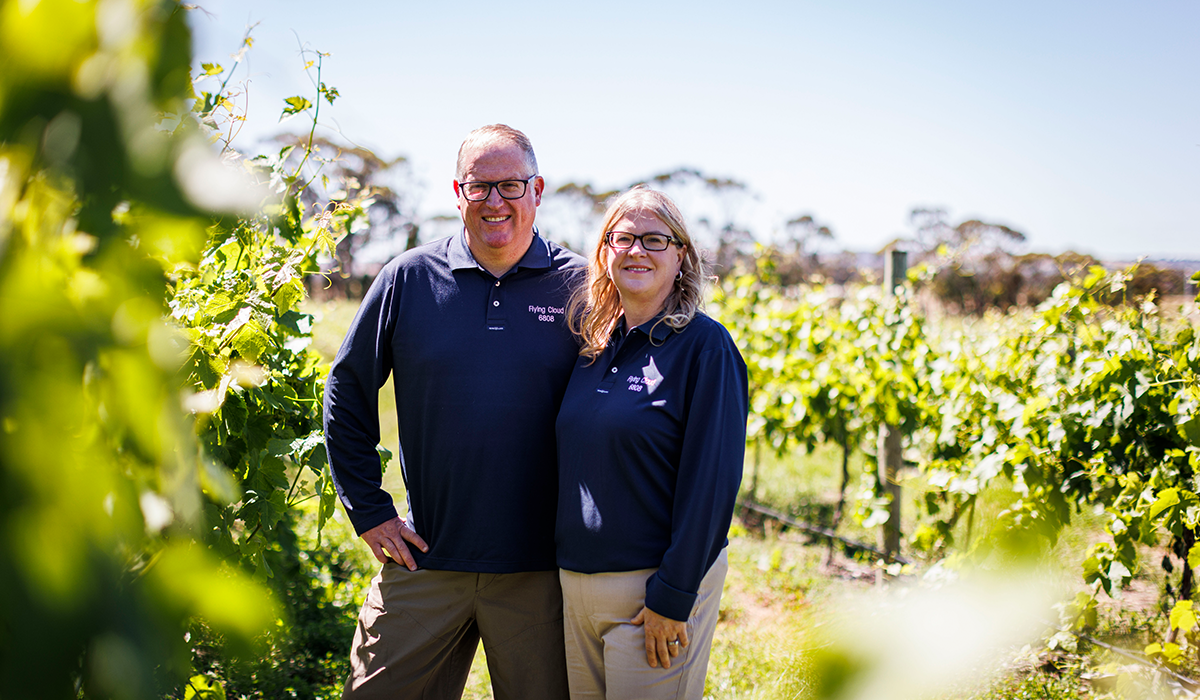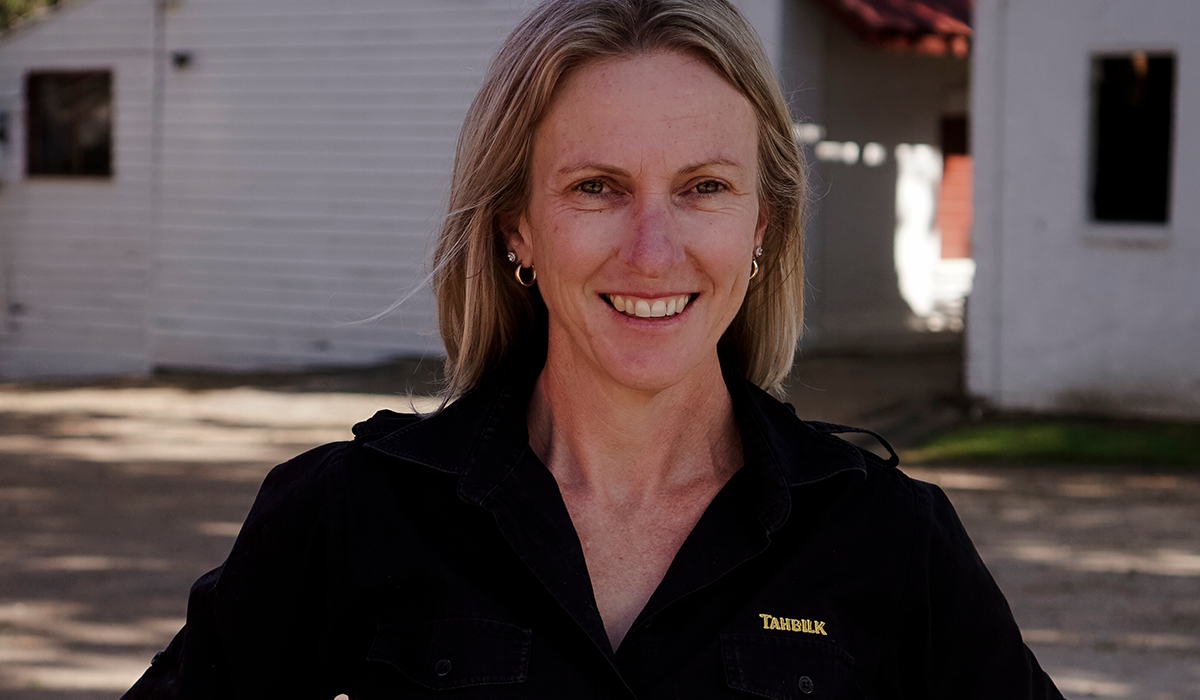"Australia is known for shiraz that showcases great power, concentration and depth," says Nigel Westblade, chief winemaker at Peter Lehmann Wines.
Shiraz is Australia's best-known grape. Planted universally, shiraz can produce a range of styles from your favourite mid-week quaffer and the perfect barbecue wine right through to premium offerings that have decades of ageability.
We spoke to five winemakers from the Barossa Valley, Eden Valley, Great Southern and Nagambie Lakes about what makes their shiraz unique, how they approach the winemaking process and why shiraz is so popular.
Joanne Nash – Tahbilk, Nagambie Lakes VIC
H. What makes your shiraz unique?JN. Like any good wine it always comes back to the fruit, the vineyards and the growing conditions. The Tahbilk Estate is nestled along the Goulburn River, and provides a unique microclimate for grape growing. Our vineyards are somewhat protected from the extremes, and it is this consistency and continuity that allows us to produce exceptional shiraz.
H. How do you approach the winemaking process?
JN. The ESP Shiraz is always produced from the best block of shiraz, on the estate, from the season. The fruit is always the hero. As winemakers, our job is to nurture that fruit during the winemaking process and ensure we capture the essence of the vineyard. Balance is always the key, everything should be in harmony and the wine should keep you guessing with layers of complexity.
Over the years there has been quite a bit of experimentation around oak – balancing the elegance of French oak with the boldness of American oak. However as every vintage is different, it's important to adapt and ensure the oak complements the wine and doesn’t overpower it.
H. What makes shiraz such a popular wine?
JN. I think it's the versatility of the variety and the influence of regionality that make shiraz so popular. From the delicate, cooler climate pepper and spice, to richer, savoury styles – shiraz can adapt to most regions and produce some beautiful wines that remain true to variety while varying in style.
Dr Steve Hall – Rockcliffe, Great Southern WA
H. What makes your shiraz unique?SH. The Nautica is the best shiraz we make. We use grapes from specific vineyards so the wine is completely unique – we think it is the epitome of what a great shiraz can be.
H. How do you approach the winemaking process?
SH. We make the best possible wine we can from the season's resources. We plan hard – from the way we tend our vines and pick the fruit, down to perfect maturation to ensure the wine in your glass is the best it can be.
Each vintage will be slightly different but the house style remains paramount. This is not an industrial production where the product can be standardised, winemaking evolves to reflect what today’s wine drinker is exploring. We always like to help people on their wine journey.
H. What makes shiraz such a popular wine?
SH. Shiraz is a very approachable wine. Fruit-driven shiraz, like ours, copes incredibly well with a wide variety of food but can also be enjoyed on its own. Anyone who likes red wine will generally love a shiraz. It's also very flexible – whether the mood is happy or sad, whether you're drinking it with or without food – a great shiraz will always fit in.

Matthew Grayson and Bernadette Stewart – Pine Drive Vineyards, Barossa Valley SA
H. What makes your shiraz unique?MG & BS. Our vineyards at Moppa are planted on top of an ancient sand dune at one of the highest points on the Barossa Valley landscape. The free draining soils, combined with the cooler evenings and morning temperatures, produce deep coloured shiraz wines with beautiful floral aromas, great flavour and silky tannins. There’s nothing quite like a Barossa shiraz.
H. How do you approach the winemaking process?
MG & BS. Our aspirations to make great wine start in the vineyard, where we meticulously manage our soils to keep our vines healthy. Healthy vines are happy vines, and happy vines produce great quality fruit. In the winery, we’re all about preserving and promoting the distinctive character of our vineyard. We want you to taste what we’ve grown, rather than a heavy handed winemaking approach.
The landscape and location of our vineyard plays a leading role in determining the special character of our shiraz. While each vintage release of Pine Drive shiraz expresses the unique character stamp of our vineyard, variations in climatic conditions from year to year do play a secondary role in determining subtle nuances in flavour and texture.
H. What makes shiraz such a popular wine?
MG & BS. What’s not to like about Barossa shiraz?! The deep garnet colour in the glass, energetic aromas of black fruit and exotic spices on the nose and a palate laden with delicious black fruits, all framed by long, silky tannins that finish with salivating, savoury tannins. Shiraz is the complete package. It's the ultimate indulgence contained within in a 750ml bottle.
Nigel Westblade – Peter Lehmann Wines, Barossa Valley SA
H. What makes your shiraz unique?NW. Early in the 19th century, shiraz cuttings were brought to Australia from Hermitage in the Rhône Valley, France. Those cuttings were planted in the Barossa in the 1840s. Shiraz has clearly found a home here, and we continue to grow vines that are nearly 180 years old – our shiraz is skilfully blended from fruit sourced from premier blocks on low-yielding vineyards.
H. How do you approach the winemaking process?
BS. Vintage variation can bring a new set of challenges to the table, so the key approach is to produce the best, most consistent product possible each year. We select the optimum fruit for the targeted wine style and protect that fruit throughout the ripening process and in the winery to best reflect the iconic Peter Lehmann style. – Brett Schutz, winemaker.
NW. The style of these particular wines can't deviate too much from their traditional place as they have a large, loyal following with high expectations. The winemaking process evolves gently with time, following improvements in technology and quality techniques that only enhance the expression of premium Barossa fruit and pay respect to the preceding vintages.
H. What makes shiraz such a popular wine?
NW. Australia is known for shiraz that showcases great power, concentration and depth. Our shiraz is so popular because of its distinctive flavours from 180-year-old low-yielding vines that are planted in one of Australia’s oldest wine regions – the Barossa. The Stonewell exemplifies a classic example of the rich and old vine shiraz from the Barossa Valley.Caitlin Brown – Mountadam Vineyard, Eden Valley SA
H. What makes your shiraz unique?CB. Shiraz from Eden Valley, particularly in the subregion of High Eden, is so different to the Barossa Valley floor. Due to our elevation and cooler climate we produce luscious, juicy and elegant wines. Mountadam shiraz has notes of white pepper spice, violet aromatics, silky tannins and a distinctive line of acidity that creates the opportunity to enjoy the wine with or without food, but also enjoy the wine in its youth.
H. How do you approach the winemaking process?
CB. Representation of the distinctive High Eden region in the Barossa is really important to me when making our shiraz. Creating a wine entirely from the estate creates an opportunity to display the versatility and complexities of Eden Valley shiraz. Our Five Fifty Shiraz is created from multiple blocks from the estate. Each block offers differing vine age, soils and aspects – these blocks are kept separate throughout their life within the winery with particular focus on less intervention, larger format and seasoned French oak.
H. What makes shiraz such a popular wine?
CB. I think the versatility of the variety continues to make it the Australian icon we know and love. The region, climate, soils, ageability and oak integration create so many diverse styles from this particular varietal. Shiraz has such a rich history in Australia, and winemakers are respectful of its history and really honour the old vines by intervening less in the winery. The minimal intervention approach allows us to showcase the intensity and purity of the fruit, while continuing to evolve with different styles.








